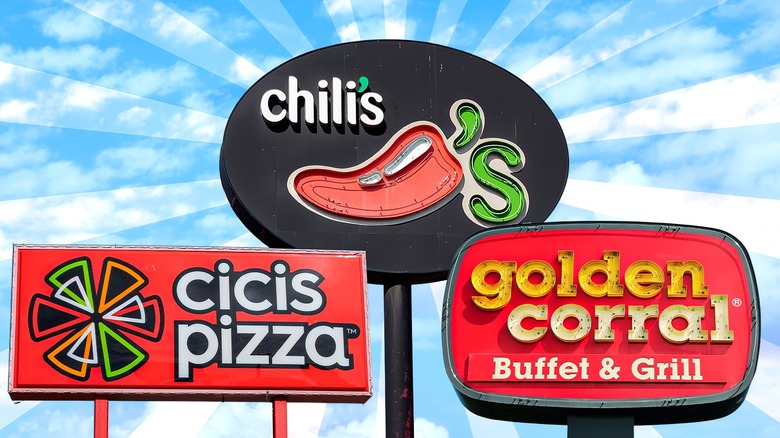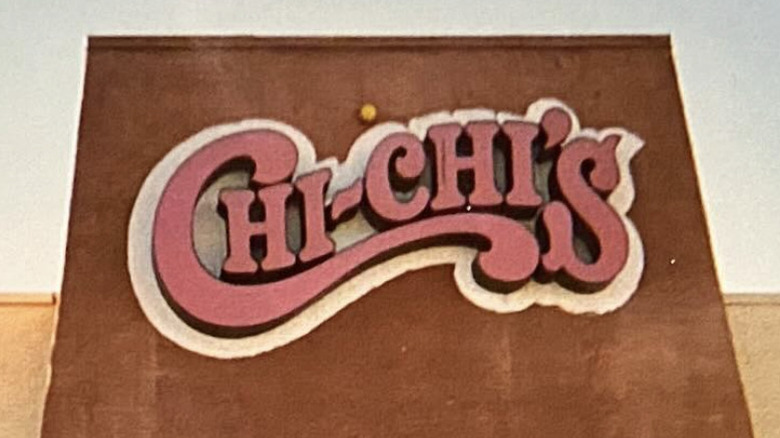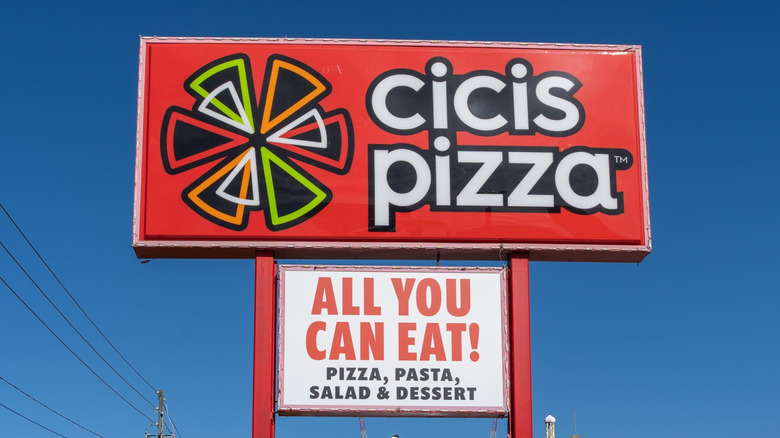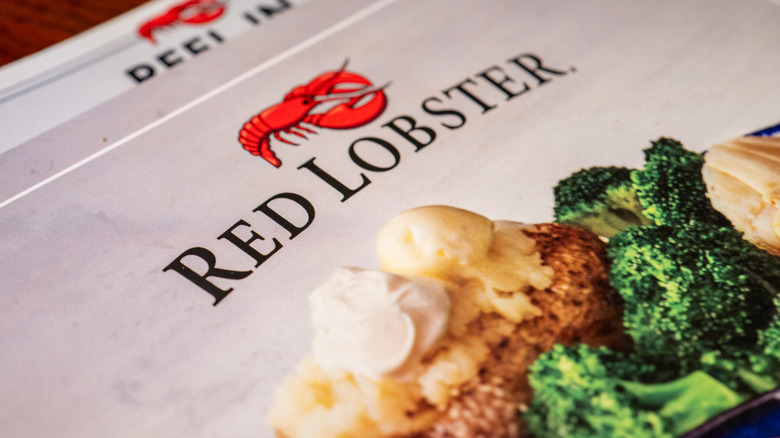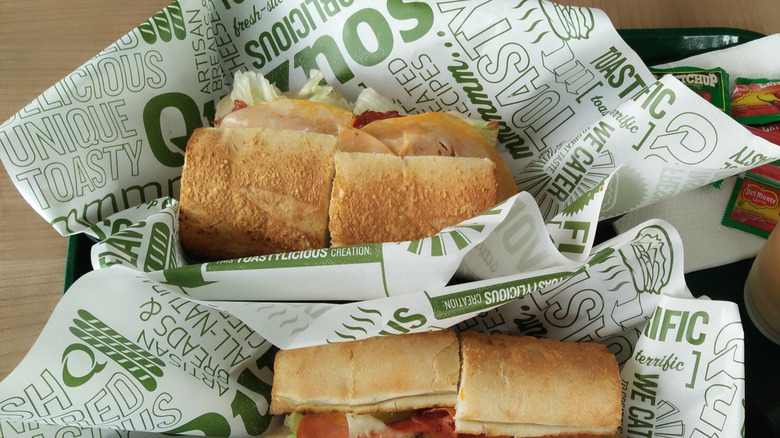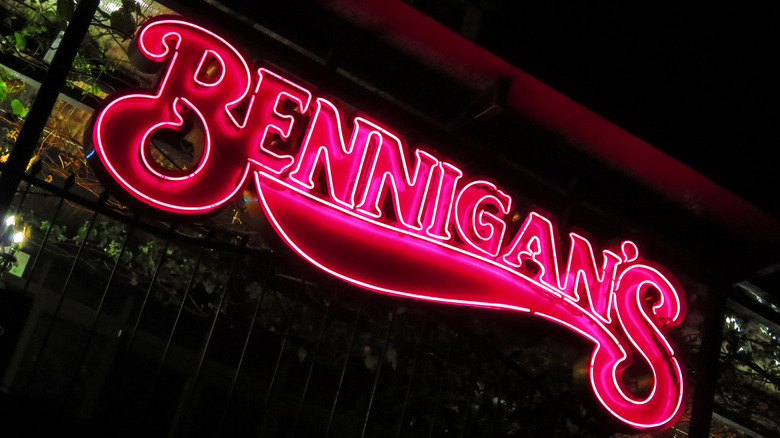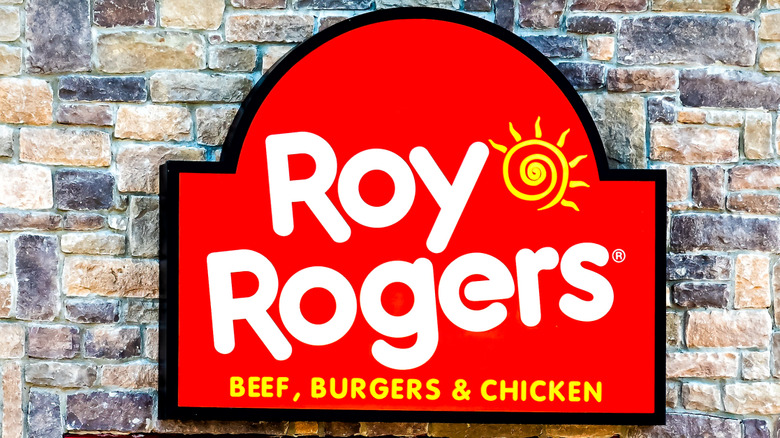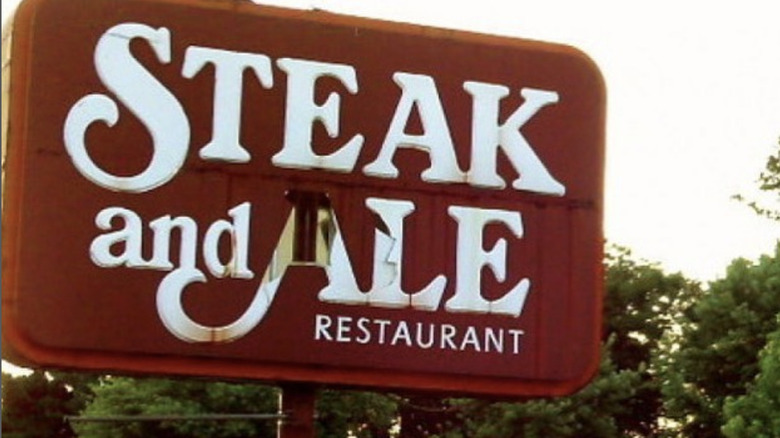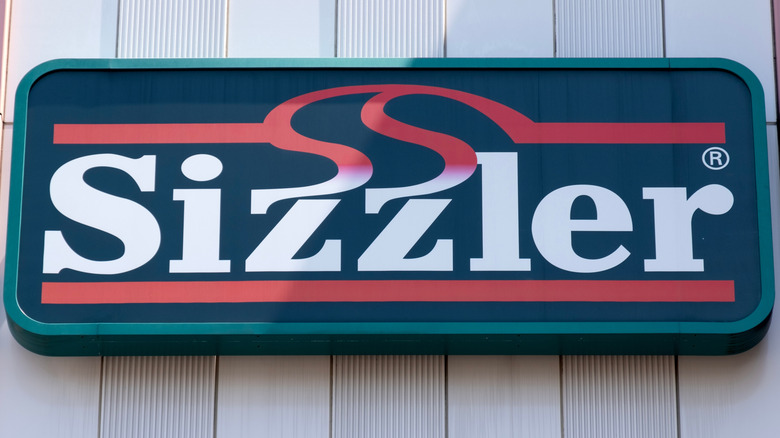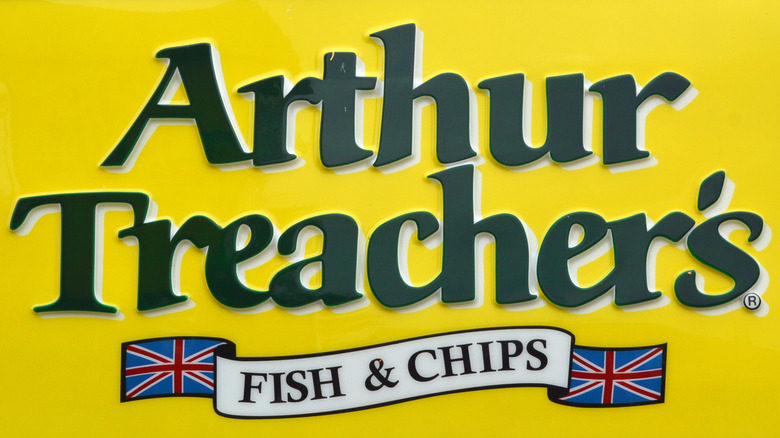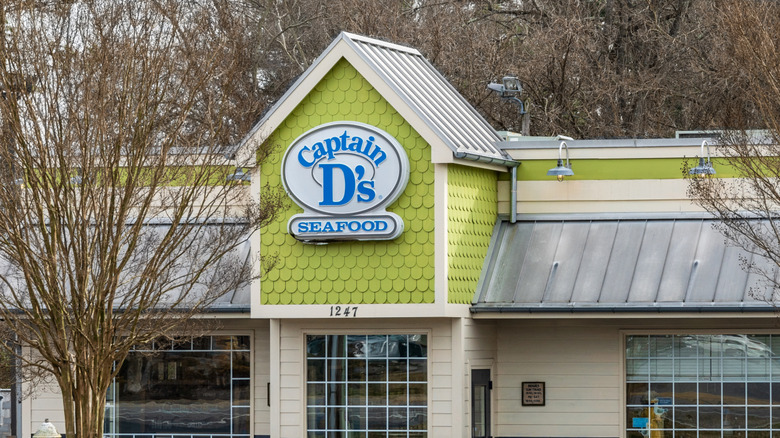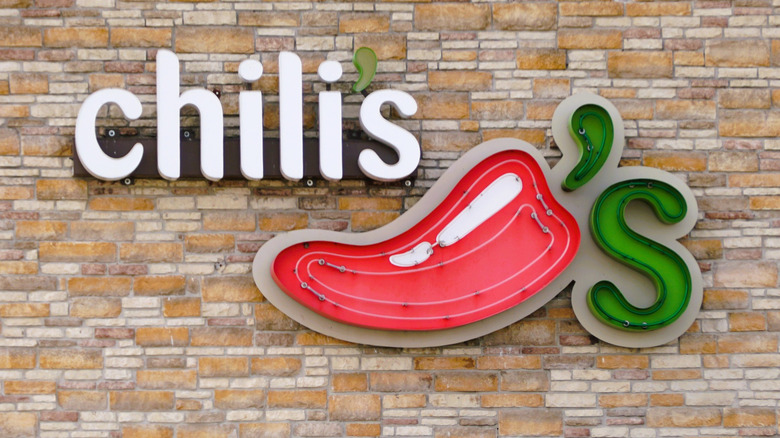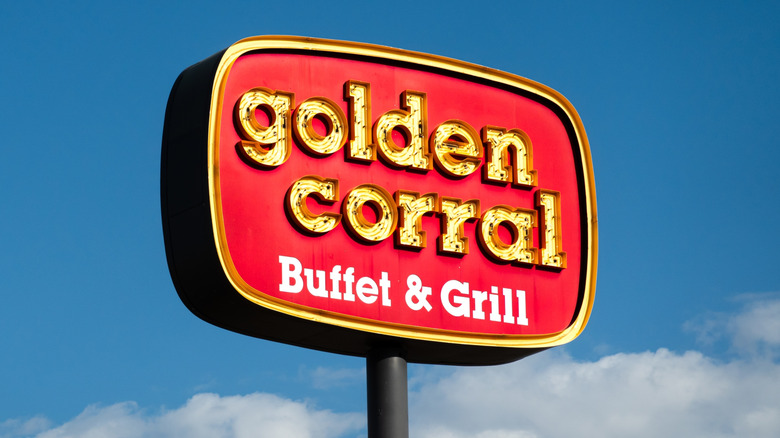Old-School Restaurant Chains That Are Attempting A Comeback
There are a lot of chain restaurants in the United States. Hundreds of them serve countless customers every day at their voluminous number of outlets. That makes for an overcrowded, highly competitive, and even cutthroat industry. How did the world of restaurants get so jam-packed with offerings of tasty and decadent treats from far too many options? Pioneering chains introduced Americans to new foods, cuisines, and flavors, which opened and thrived in the latter half of the 20th century. They were so important, not to mention lucrative and beloved, that they inspired other businesses to give fast food or casual dining a try, and they became so successful that they pushed out the older entities. Lots of fast food chains closed lots of stores as recently as 2024.
Over the last couple of decades, once dominant and country-saturating fast food and sit-down alike places saw their impact diminish and vanish due to financial problems, changing collective tastes, or broad cultural trends. Down but not out, many of those nearly forgotten also-rans are surprisingly making big plans for the future. Here are some once major chains from the distant past that are back on their way up the food chain.
Chi-Chi's
To large swaths of the United States in the 1970s, Mexican and Tex-Mex food was brand new. It was also tasty, and a menu full of Americanized Mexican-style dishes that would later become commonplace fueled the explosive growth of Midwest chain Chi-Chi's. The restaurant company peaked in 1986 with 237 locations across the country, a number which had fallen to 144 by the early 2000s. Unsurprisingly, Chi-Chi's applied for bankruptcy protection in 2003, and only a month later, the Chi-Chi's controversy you totally forgot about emphatically and tragically led to the speedy demise of the entire operation. Four people died and more than 650 people fell seriously ill from Hepatitis A-infected green onions used at a Pennsylvania Chi-Chi's where they were consumed. Facing hundreds of lawsuits, Chi-Chi's closed all of its remaining eateries in 2004 and pivoted to producing a line of jarred salsas.
Michael McDermott, the son of Chi-Chi's co-creator Marno McDermott, hopes that 20 years is enough time to make the taint of deadly scandal disappear. In 2024, he bought some of the rights to the Chi-Chi's name from Hormel Foods and plans to revive the dormant chain. Fifty years after the first Chi-Chi's started service near Minneapolis in 1975, McDermott opened a new Chi-Chi's nearby in 2025. A second Chi-Chi's in Maple Grove, Minnesota, is set to debut in fall 2025.
Cicis Pizza
Launched in Texas in the mid-1980s, Cicis Pizza operated with what was, for a few decades, a can't-miss formula. It sells pizza, but at a much cheaper price and in a much larger variety than other mega-chains by keeping its products simple, modest, and part of an all-you-can-eat buffet. By 2012, it could boast both quantity and quality, with a broad customer survey naming Cicis the country's favorite pizza chain. It expanded to 550 outlets in 24 states, and it opened an average of 25 to 30 new spots annually.
In 2021, Cicis had shrunk by about half, and the parent company of the chain of around 300 stores filed for bankruptcy. It couldn't manage the operational and financial challenges of the COVID-19 pandemic, when shutdown orders forced regular customers out of restaurants' dining rooms. Buffets were particularly affected, as that's not a format that translates well to the takeout model. Cicis had amassed as much as $100 million in debt, and needed to restructure.
By 2025, the restaurant count had stabilized at 270 stores, and the environment was stable enough for Cicis — which is one of the pizza chains that never use frozen dough — to expand its menu with innovative choices like an Oreo Brownie Pizza, a chicken and waffle pizza, and a Nashville-style chicken pizza. In tandem with its 40th anniversary, The company is aggressively pursuing new franchisees to continue to slowly but steadily open up new spots around the country.
Red Lobster
Once the quintessential seafood restaurant, Red Lobster was the premiere national chain for shellfish platters, big bowls of seafood pasta, and Cheddar Bay biscuits. Strongly associated with dining out in the 1980s and 1990s, it looked as if the restaurant was sunk by the 2020s. Red Lobster lost a lot of money on its "Endless Shrimp" promotion, an occasional and temporary all-you-can-eat event made a forever option in 2023. The restaurant suffered an $11 million loss in the third quarter of that year, but that was only one of the astronomical financial losses Red Lobster endured. In May 2024, it filed for bankruptcy, citing around $30 million in accessible cash against $1 billion in debts. Of its 578 restaurants in North America, dozens closed immediately, but by September 2024, Red Lobster had righted the ship.
Investors associated with Fortress Investment Group created RL Investor Holdings LLC and fully took over the struggling seafood chain, plunging $60 million into a recovery campaign. Red Lobster emerged from Chapter 11 status and more than 500 restaurants were open for business with a scaled-down menu, altered recipes, and widespread dining room updates and remodeling on the way.
Quiznos
Back in the 1990s, Quiznos was the only legitimate challenger to Subway's position as the leader in fast food submarine sandwiches because it offered something not many other places did: Its sandwiches were served hot, prepared in rapid-toasting machinery. In 2006, Quiznos ran nearly 5,000 sub shops. By the end of that decade, Quiznos was in serious trouble. With the Great Recession taking away so many office jobs, Quiznos lost a large number of its lunchtime customers. Revenues kept falling, and by 2017, 90% of all of those Quiznos had shut down. By 2021, Quiznos had shrunk to just below 300 restaurants in the U.S. after more business problems and a sale to and restructuring by Rego Restaurant Group.
With a large investment by High Bluff Capital Partners and the recommendations of revamp consultant Prophet, Rego set out to save Quiznos. Many stores were remodeled to make them look more up-to-date and to function in line with consumer trends. That meant the adoption of drive-through systems and Quiznos accepting Bitcoin as payment, and using its food in low-cost ghost kitchens. While it remains to be seen if Quiznos will rise again, those moves may have at least stabilized the company. It hasn't closed any stores in the last few years, and as of 2025, oversees 150 stores with plans to open a handful of new ones.
Bennigan's
Norman Brinker is credited with the creation of casual dining — restaurants with a laidback atmosphere and prices reasonable enough to attract families as well as young revelers. Brinker helped bring Chili's and Steak and Ale to the landscape as well as Bennigan's, a restaurant chain inspired by traditional Irish pubs. With a menu consisting of steaks, burgers, and sandwiches, including the original Monte Cristo, Bennigan's counted hundreds of locations in the years after it debuted in 1976.
In 2008, and in the midst of a major economic downturn that resulted in diminished discretionary income for millions of Americans, Bennigan's umbrella company, Metromedia Restaurant Group, filed to receive Chapter 7 bankruptcy protection. At the time, about 300 restaurants with the Bennigan's name were open, of which 138 were owned by Bennigan's Franchising Co. After the resolution of the bankruptcy, only 70 were left, and that figure fell to 10 by 2020.
In just a few years, new owner Legendary Restaurants had built Bennigan's back up, and is still in search of business partners to franchise two distinct Bennigan's-branded concepts. As of 2025, there are six Bennigan's flagship, pub-style restaurants in Illinois, Iowa, Texas, and North Dakota. Meanwhile, there are more than 30 Bennigan's On The Fly operating, offering express service and a limited menu in airports, casinos, and pre-existing retail spaces, as well as international locations.
Roy Rogers
One of the most omnipresent fast food restaurants of the 1970s and 1980s was named after a singing movie cowboy popular in the 1930s and 1940s. The Marriott Corporation started a chain in 1968 that sold burgers, roast beef sandwiches, and fried chicken, seeking to cut into the market share of McDonald's, Arby's, and Kentucky Fried Chicken, respectively. It paid Roy Rogers a fee for the use of his name and some public appearances. By the end of the 1980s, Roy Rogers had widely expanded into a network of 650 restaurants, most of them in the eastern United States.
When Roy Rogers was at its peak, competitor Hardee's bought the rights to the name in 1990. As the decade passed, Hardee's converted a few dozen Roy Rogers stores into Hardee's outlets, and other burger chains acquired and transformed hundreds of extant locations. As of 2002, only about 60 Roy Rogers remained, and by the 2020s, the number fell to just around 40.
Despite fielding 95% fewer restaurants than it once did, the less robust Roy Rogers is looking to the future. Most of its locations aren't freestanding, but situated inside of truck stops. Company-wide, a 2020s overhaul led to a new physical look for individual restaurants along with the installation of electronic menu boards, the use of a more streamlined drive-through experience, and the introduction of a smartphone app.
Steak and Ale
Before the 1960s, there was only one kind of steakhouse — expensive and special-occasion-only establishments. Then Steak and Ale came along to make a steak dinner into a much more affordable and family affair. Affecting an old-time English sensibility, Steak and Ale introduced more Americans to salad bars and free soda refills than any other chain, and those were just secondary to the reasonably priced cuts of steak and baked potatoes. After parent company Pillsbury's undertook a major expansion plan, about 300 Steak and Ales were filling up every night around the country.
By 2008, with customers favoring one of the many other casual dining establishments that Steak and Ale inspired, owner Metromedia Restaurant Group entered bankruptcy proceedings and shuttered the paltry 58 budget steakhouses that were still standing.
In 2018, some of the most memorable elements of Steak and Ale returned to restaurants. By that point, Legendary Restaurant Brands owned Steak and Ale's trademarks and also ran Bennigan's, and it placed a few of the former's signature dishes on the latter's menu. The Kensington Club top sirloin combo, Smothered Chicken, and Hawaiian Chicken were such a successful reintroduction that franchisee Roy Arnold announced plans to open as many as 15 new freestanding Steak and Ale restaurants in the 2020s. Steak and Ale 2.0's no. 1 opened in Burnsville, Minnesota, in 2024.
Sizzler
Debuting in Culver City, California, in 1958, Sizzler was a bridge restaurant — a steakhouse like the establishments popular up to that point, and previewing the salad bars and buffets that would bring novelty to dining out in the decades to come. Geared toward families, customers could get an affordable steak dinner or access a buffet line with an extensive selection of greens, soups, a taco bar, and desserts. By the 1980s, Sizzler was a national chain, well known for its crispy fried shrimp, Malibu chicken, and garlic toast.
Everything started to cool down for Sizzler in 1996. Struggling financially, Sizzler closed 130 restaurants, laid off 4,600 employees, and decided to no longer operate in the Midwest. On a slow decline after nevertheless, a Chapter 11 bankruptcy filing came in 2020 after Sizzler couldn't withstand the drop in business caused by COVID-19 based dining room shutdowns.
As of 2025, Sizzler remains open, down to 74 restaurants, with almost all of them in California. While some failed buffet restaurants won't be coming back, Sizzler just might rise again. In addition to focusing on its original, core market, Sizzler has plans to survive into the future by looking to the past. Marketing will focus on fondly remembered aspects of old Sizzler, such as the cheese toast and the salad bar. If all goes well, existing Sizzler stores will be remodeled with a more modern feel and new locations might start popping up, too.
Arthur Treacher's Fish and Chips
A character actor who often played English butlers and who was the sidekick on "The Merv Griffin Show," Arthur Treacher was a well-known media personality in the mid-20th century. He was so closely associated with British things that in 1969 his name was licensed out for use by a fast food chain that specialized in that very British meal of fish and chips.
One of the first and largest restaurant groups to take over the seafood niche, it took Arthur Treacher's Fish and Chips only about a decade to grow into a lineup of 826 locations. Then its owner, frozen fish producer Mrs. Paul's, sold the chain in 1982 to Lumara Foods of America, and bankruptcy followed two years later. Arthur Treacher's Fish and Chips remained in business, albeit rapidly shrinking. By 2010, it was down to 27 stores, and by 2021, only one remained standing, in Cuyahoga Falls, Ohio.
That's when another niche fast food entity bought Arthur Treacher's Fish and Chips and began to modestly but effectively turn things around. The hot doggers at Nathan's Famous acquired the company and set about making Arthur Treacher's into a cheaper to operate ghost kitchen, making the company's fried seafood dishes available through delivery apps. As for its physical footprint, Arthur Treacher's has tripled. Its third store opened up in Cleveland Heights, Ohio, in April 2025.
Captain D's
The first Captain D's sold much more than seafood. Ultimately a major player in fast food fish, it expanded from a single Tennessee outlet into a primarily Southern chain of more than 600 restaurants. The franchise model, so often financially beneficial to the parent company, led to a major setback for Captain D's in 2008. The chain's single-biggest operator, Serve Holdings LLC, filed for bankruptcy and owed Captain D's nearly $300,000. That led to about two dozen restaurant closures, and more followed, with Captain D's spots going out of business in South Carolina and throughout Texas. After that prolonged period of slow contraction, Captain D's had shed nearly 100 locations.
With the dust apparently settled by 2025, Captain D's announced expansion plans. By the end of the decade, two new restaurants in Maryland and three in Texas will be up and running. The company is also actively searching for international franchisees interested in placing fish shops in what it has identified as growing markets for its food: Canada, Central America, Spain, Asia, and the Caribbean.
Chili's
Perhaps the definitive sit-down, good-time, family-friendly bar and grill, Chili's began serving up a menu of Tex-Mex inspired options, burgers, appetizers, cocktails, and baby back ribs in 1975. Popularizing the fast casual format, the restaurant whose name was inspired by chili dominated the scene it created, with 1,312 stores open as of 2007. Then the Great Recession hit, and the loss of disposable income in the suburbs crushed Chili's. By 2022, more than 80 locations had permanently shut down, and operator Brinker International brought in a new chief executive to salvage what was left.
After identifying the problems – the company had spent too much effort and money on expanding the menu and investing in takeout programs — Chili's regrouped, and focused on its core business and a simpler menu. While its competitors have continued to falter in the 2020s, revenues at Chili's went up. In 2024, its quarterly revenues rose around 15% against 2023 numbers, helping to generate most of Brinker International's $4.42 billion revenue in fiscal 2024.
In addition to seeing great financial results by buying back franchised locations, it's a value menu that truly saved Chili's. In 2022, it launched 3 For Me, which gives customers a burger or chicken sandwich, fries, a choice of a starter, and a refillable soda, for $10.99. That allowed Chili's to compete not just with casual restaurants, but with fast food places, too.
Golden Corral
Restaurants were hit hard by public place shutdown orders designed to stop the spread of COVID-19 in 2020. Takeout sustained business for many chains, but buffet-style places like Golden Corral had to make bigger changes to stay afloat. In the summer of 2020, some Golden Corals reopened with a more controlled cafeteria-style service, while multiple entries in the nationwide chain wound up closing down permanently. Florida-based multi-unit franchisee 1069 Restaurant Group filed for bankruptcy in late 2020, which led to the shutdown of even more Golden Corrals.
At the end of 2021, 499 Golden Corral restaurants stood. Two years later, there'd only be 357, but that was in spite of major upticks in customer counts and revenue. Building on that upswing, Golden Corral launched an offshoot, non-buffet, fast food-style restaurant called Homeward Kitchens, renamed Golden Corral Favorites in 2025. The company may open those stores in as many as 500 cities, selling packed and plated versions of the items it once sold only in the help-yourself food lines, like fried chicken, meatloaf, and pot roast.
